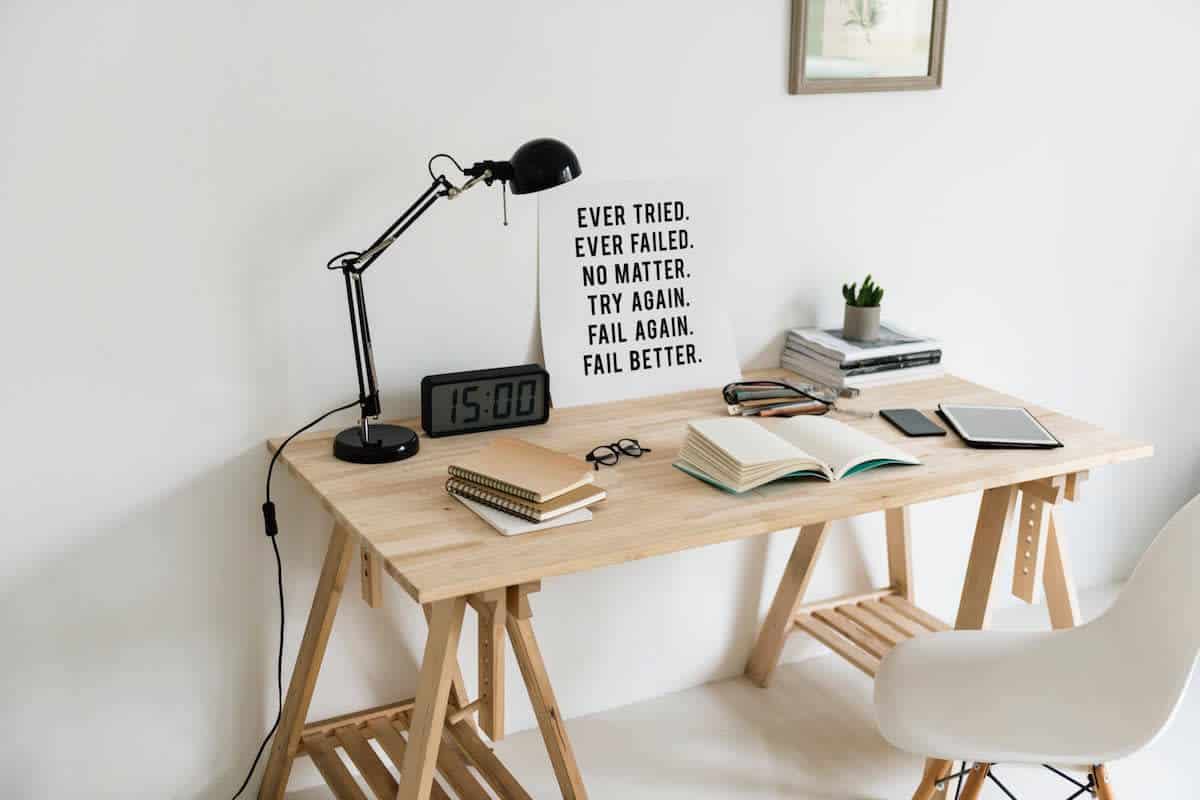Creatives often find it difficult to make a living doing what they love. Many people end up having to strike a balance between following their passion and holding down a job that can pay the bills.
However, if you choose the right side hustle, you don’t have to choose between the two. You can make some extra money while still focusing on what you love.
Here are some tips to help you figure out the best side hustle for you—and how to start that side hustle, today!
What is a Good Side Hustle?
So what makes a good side hustle? These are a few features you should look for when determining whether a gig will work as a side hustle or not.
Flexibility
A good side hustle should fit within your schedule.
Since you’re going to be working on your side gig when you have free time, it should be a job that allows you to set your own hours. That’s one reason that an entrepreneurial gig is always preferable to one where you have a boss setting your schedule for you.
For instance, let’s say you’re a graphic designer and you’re considering taking on a contract for a marketing company that handles web design for a number of clients. You should consider whether you could find your own clients and cut out the middleman. This will give you more freedom in choosing exactly when you work.
The amount of work should be flexible.
If you have a busy week at your portrait photography business, you don’t want to be obligated to put in a bunch of time at your side gig teaching photography classes. A good side hustle usually prioritizes quick jobs over long, drawn-out projects. That way, you won’t find yourself in the middle of an obligation if business picks up at your main job.
Creative Freedom
As a creator, you probably want a side hustle that allows you to, well, be creative! This is especially important if your day job is less art-oriented—this way, your side hustle can give you the fun fix you need.
Lucrative
Sounds obvious, but try to find a side hustle that pays relatively well. If making some extra money is your main motivation for taking on a side job, it’s important that you’re able to earn enough to justify the time you’ll spend on it. This can be difficult, at times, to gauge in advance: how are you supposed to know how long a certain project will take, and whether it’s worth it for you? Should you charge a flat fee or per-hour rate?
That’s one reason why it’s a good idea to start by just getting to work, rather than investing too much time or money during the planning stages. Once you see how it goes, you can better decide how much time you’re willing to put into your side hustle, and whether specific projects are worth taking on, compensation-wise.
How to Choose a Side Hustle
Not sure what the best side hustles are? When it comes to choosing a side hustle job, there are a few considerations to keep in mind.
Time is Money
Consider how much free time you’re willing to devote to a side job.
Are you going to wake up earlier than normal? Stay up late? Or give up your days off? Succeeding at your side hustle will probably involve some sacrifice. You should think about what free time you’re willing to dedicate to your side gig.
Keep in mind that if you manage to find a side hustle job that involves doing what you love, spending your free time on it will be a lot less painful!
Figure out the amount of money you’ll need to make for the side gig to be worthwhile.
Take a look at your current income and expenses to start figuring out a goal for how much money you want to make with your side hustle. This can help narrow the field when you’re trying to decide what the best side hustle is for you.
However, if you’re not completely strapped for cash, time and money aren’t the only things that should go into your decision. Remember that a side hustle can also offer experience and exposure that could end up helping you with your regular gig.
Avoid side jobs that require a large initial investment.
Your side hustle job should help take the pressure off by adding a flexible source of income. If you need to begin by making a large investment in new equipment such as a new camera or some expensive lenses, you’re already starting off on the wrong foot. So unless you have a lot of disposable income to play with, try to choose a side job that you already have all the equipment for.
Do What You Love
Choose a side hustle related to your skills and interests. For example, if you’re a designer, you could start designing business cards for friends. If you’re a photographer that loves babies, why not start offering newborn mini-sessions? This will let you use the skills you already have and develop them further.
Try Teaching
Teaching, tutoring, and hosting workshops are good side hustles for many creatives. Your expertise in your field is valuable, so don’t overlook it as a business opportunity.
Some of the best side hustle come out of writing tips, tutorials, or equipment reviews. You could begin by writing query letters to websites or publication in need of writers.
There are all sorts of ways to monetize your expertise; photographers, for example, can sell Lightroom presets to their fellow shooters.
You could try starting a YouTube channel to share your design process, round-ups of your favourite illustration tools, or interviews with cool local fashion photographers: the possibilities are endless! There, you can run ads, or paid sponsorships and partnerships. (Need launch inspiration? Check out out tips on how to ace making your first YouTube video.) You could even embed your videos onto your online portfolio, a surefire way to impress clients.
How to Start a Side Hustle
Now that you’re narrowed down the best side hustle for you, it’s time to get started. Here’s some tips for acing that first year running your side hustle job.
Be Ready to Adapt
When starting any new business venture, it’s a good idea to have some sort of plan. What kinds of assignments do you want to land? What level of revenue do you want? But it’s even more important to listen to what your side hustle clients are telling you. For example, if you’ve started a side job selling paintings and you find your large pieces aren’t selling, be open to dropping them from your line-up and focusing on the smaller pieces that are doing well. Is your fine art struggling to find customers? Pivot to creating pieces with more mass appeal to generate more cashflow via selling to home stagers, hotels, and offices.
Put the Word Out
Show Off Your Work With an Amazing Online Portfolio
Creating a gorgeous website is ridiculously easy these days. Just use an online portfolio builder! It only takes a few minutes to put together a professional-looking site. They have a variety of clean, modern templates that will show off your work beautifully. Choose an online portfolio that offers a free trial so you can make sure it fits the needs of your particular side hustle.
Don’t forget to pack the About Me page with information about yourself—the more clients get to know you, the more inclined they’ll be to get into business with you.
Work That Social Media
Don’t just tell your friends about your side gig. Broadcast your new side hustle from all your social media platforms! Make sure your online portfolio platform can integrate your social media feeds. That way, you can save time by making a single post and having your amazing wares appear on your social and your site.
Land as Many Clients as You Can
The best ways to find clients will depend on what your side hustle is, but here are some general tips to get you started.
Get Out There and Meet People
If your side hustle is related to your full-time gig, you might be able to draw on your existing community to find some clients. To find more, however, you’ll need to make an effort to network outside your usual circles. For example, if you’re starting a pet portrait side gig, work your local pet expos and animal lover Facebook groups to make contact with other industry pros and owners. Don’t forget to bring your business cards and hand them out to everybody!
Check Out Freelance Job Boards
There are many websites for finding freelance jobs or offering up your services as a freelancer. Some of the most popular are Guru, Upwork and Freelancer.
Run Some Facebook Ads
Simply posting on social media is a great way to inform everyone you know about your new side gig. But if you’re looking for a way to extend your reach and secure new clients, consider using Facebook ads. It’s likely cheaper and easier than you think, as you can start by spending as little as $1.
How to Succeed at Your Side Hustle
Okay—now that you’ve learned how to choose a side hustle, figured out the best side hustle for you, and how to start a side hustle, it’s time to figure out how to make that side hustle job a big success! Here are some ways to kill it at your side gig.
Manage Time Wisely
Don’t let your side hustle affect your primary job.
The idea behind a side job is to do something extra and gain additional income. The energy you put into your side hustle should not come at the expense of your full-time gig. The key is to set aside some of your free time to focus on the side hustle, and not let it bleed into your work hours for your main job.
If you’ve been getting by without using a calendar app to manage your time, you should start using one now. These apps and other productivity tools will come in handy when you have to start juggling tasks from your different jobs.
Focus on the work and building your client base first.
Don’t spend too much time on things that don’t generate revenue. When it comes to getting a side hustle going, it’s more important to just start working and build a body of work first. Once you have a few gigs under your belt, a burgeoning [online portfolio]/online-portfolio), and a couple steady clients providing a regular income stream, then you can start working on creating your brand identity and crafting a social media strategy to promote your services a little more.
Make your client approval process as seamless as possible.
Are you a designer putting together a new logo for someone? Or a photographer sharing snaps from your latest shoot? Try and find an online portfolio platform that has proofing functionality built in. That way, your clients can view and approve proofs right on your site. It’s a real time-saver, and makes you look extra-professional.
Use it to Enrich Your Full-Time Work
Don’t be afraid to take what you learn in your side hustle and apply it to your regular gig.
If you choose a side hustle that’s related to your career, you can treat it as another way to gain experience and new skills. Whether that’s a new style of photography or dealing with a different type of client, the chance to gain experience is another benefit of taking on a side job.
Ensure your clients know about all of your offerings.
If you do a great job in your side hustle, it can lead clients to become customers for your full-time job and vice versa. That’s why it’s a good idea to make sure each of your clients knows about all the services you offer.
Show Off Your Side Hustle
Take pride in your side hustle.
Maybe you’re an editorial photographer who specializes in shooting news for large publications. You might be leery of promoting your side hustle of creating postcards to sell at local craft fairs. Perhaps you think that job doesn’t represent who you are and what you want to do.
But you shouldn’t keep your side hustle a secret! Taking on extra work to make some additional income doesn’t take anything away from your credibility. It just shows you’re motivated and organized enough to handle multiple jobs. It’s worth remembering that every artist has had to work a day job at some point in time.
Create a blog about it.
Needing some extra money is something most people can relate to. With the struggles many artists go through to make a living, there are many out there who are debating whether or not to take on an extra job. So your stories about the ups and downs of managing a side hustle could be interesting reading. Sharing your hard-won knowledge can help your clients get to know you more (and hopefully want to give you more business!), and will also help position you as an industry leader.
Pick a portfolio platform that has built-in blogging capability; a great blog will drive more traffic to your site—and land you more fans, and paying clients.
Add a store to your online portfolio.
With your side hustle and full-time gig combined, you probably have a wide offering for your clients. So you should ensure it’s easy for them to see all the options at a glance, and purchase your products or services. The best way to do that is to set up a store on your portfolio.
Track Your Success
It’s a good idea to set measurable goals and keep track of progress—it’s much easier to gauge whether you’ve got a good side hustle going if you have some set goals to work towards and targets to meet. Some examples of goals you could set are the number of projects completed, the size of your client roster, or a specific amount of revenue.
You should also put a timeframe on all of your goals. When it comes to side hustles, it can be tempting to set your goals aside, so make sure to set a deadline for yourself, and schedule frequent check-ins to ensure you’re meeting those goals in a timely manner.
Stick with it!
Don’t get discouraged if you aren’t seeing the revenue you expected from your side hustle early on. You mustn’t give up! One of the benefits of a side job is that you can be free to experiment with the types of jobs you’re taking on, or how much work you’re doing, since it’s not your primary source of income. You can always retweak your plans and try a different tack. If you’re adaptable, your new side hustle is sure to be a success. We’re rooting for you!
Looking for more advice on how to get the most out of your creative business?
12 Creative Entrepreneurs Share Their Best Business Advice
Tips for Taking Your Side Hustle to Main Gig
5 Ways to Fund Your Personal Project












